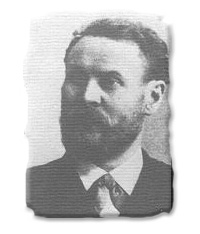 |

|
||
|---|---|---|---|
| |
|
||
 |
 |
||
|
German engineer Otto Lilienthal, "airman's" philosophy was to first get up in the air, fly around with gliders, and obtain the "feel" of an airplane before putting an engine on the vehicle.
| |||
|
Otto Lilienthal of Germany was a brilliant contributor to the conquest of the air and made nearly 2,000 successful glider flights, from 1891 to 1896, in sixteen seperate glider types.1 Lilienthal's book of aerodynamic data published in 1889 Der Vogelflug als Grundlage der Fliegekunst (Birdflight as the Basis for Aviation)2 emphasized the curvature of a bird's wings as the secret of lift.3 Lilienthal's book greatly influenced aeronautical design and was the bible for the early designs of the
Wright Brothers
and other early aviators. However, some of the data published by Lilienthal was erroneous based on the incorrect coefficient of air pressure published by John Smeaton in 1759.4 The error was corrected by the Wright Brothers through wind tunnel tests made in their bicycle shop.5
Lilienthal's early gliders were monoplanes with cambered wings and a fixed tail plane. The pilot dangled like a marionette from these fragile craft, head and shoulders above the wings, body and legs below. It was by shifting weight, swinging hips and legs forward or back, or from side to side, that the operator achieved some degree of control.6 | |||
| By 1896 Lilienthal was ready to attempt powered flight. He had constructed a glider with flapping wing tips whaich was to be powered by a small motor he had built that operated on compressed carbonic gas.7 However, on August 9, 1896, Lilienthal was killed when he stalled and crashed to the ground while gliding. He broke his spine, and he died a day later in a Berlin hospital.8 |
| End Notes: |
|
1. Tom Crouch. The Bishop's Boys: A Life of Wilbur and Orville Wright. (New York: W.W. Norton & Company, 1989). 142. 2. Ibid. Page. 143. 3. Beril Becker. Dreams and Realities of the Conquest of the Skies. (New York: Atheneum, 1967). 136. 4. Harry Combs & Mrtin Caidin. Kill Devil Hill: Discovering the Secret of the Wright Brothers. (Boston: Houghton Mifflin Company, 1979). 374. 5. Peter L. Jacob. Visions of a Flying Machine, The Wright Brothers and the Process of Invention. (Washington, D.C.: Smithsonian Institution, 1990). 126. 6. Alvin M. Josephy, Jr., ed. The American Heritage History of Flight. (American Heritage Publishing Co., Inc., 1962). 83. 7. Ibid. 8. Tom Crouch. 145. |
|
Return to Early Index © Larry Dwyer The Aviation History On-Line Museum. 2009 All rights reserved. November 22, 2009. |